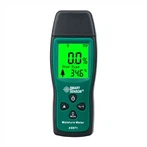Six common misconceptions about gas warning devices
Gas detector is one of the commonly used detection instruments in industrial production. It can detect the concentration of toxic and harmful substances in work, detect the types of gases in the environment, and use corresponding safety protection equipment based on the detection results. However, when using gas detectors, there may be some misunderstandings. The specific situation is as follows:
Misconception 1: Gas detectors can detect any gas
A detector can only detect a specific gas. Composite gas detectors can only detect several gases simultaneously.
Misconception 2: Gas detectors can be installed freely
Strictly require the installation position of gas detectors. The installation position is incorrect and cannot be detected properly.
Misconception 3: Use high concentration gas test during acceptance
Some customers use high concentration gases for testing during the acceptance process. This method is very loose and can easily damage the instrument. The detection range of combustible gas detectors is 0-100% LEL. Testing with gases higher than this concentration range may fumigate the sensor, causing damage or detection failure!
Misconception 4: As long as there is combustible or toxic gas around the gas detector, the alarm should sound an alarm
The condition for a gas detection alarm to sound is that it will only emit an alarm signal when the measured gas concentration reaches or exceeds the preset value of the instrument.
Misconception 5: Damage to the explosion-proof facilities of the gas detector itself does not affect its use
In the process of use, if there are phenomena such as alarm explosion-proof seal damage, looseness, explosion-proof pipe rupture, etc., the explosion-proof facilities should be repaired in a timely manner.
Misconception 6: Gas detectors do not require maintenance and upkeep
A gas detector is a measuring instrument that requires regular calibration to ensure the accuracy of its detection. Long term use of gas detectors can cause drift, and if not calibrated in a timely manner, the error will increase, causing safety hazards.
According to regulations, the longest calibration cycle of gas detectors shall not exceed one year, and enterprises with specialized metrology departments are advised not to exceed three months. The calibration of gas detectors should be operated by professional personnel.






